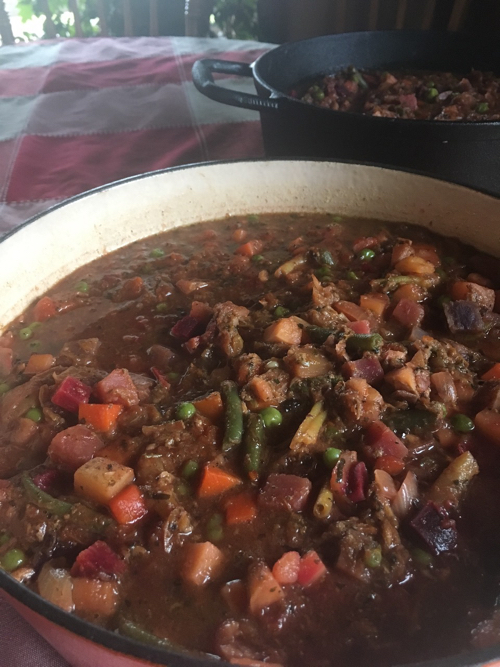 🖨️ Print post
🖨️ Print post
Translations: Spanish
A flexible soup recipe is a must if you want to eat food that is healthy for you and the planet. Using local and seasonal ingredients maximizes freshness and nutrient density and helps to minimize the energy required for transportation and storage. With broth, veggies, salt, spices and herbs, you can make an infinite variety of soups.
Ingredients
- bone broth
- onion, chopped
- seasonal vegetables (potatoes, parsnips, turnips, carrots, green beans, peas, corn, brassicas, beets), chopped
- garlic to taste
- herbs/spices to taste
- unrefined sea salt and pepper to taste
- optional whole grain rice, dried beans, dried peas, lentils
- optional meat
Instructions
- Bring your already-made bone broth to a simmer.
- Add onion.
- Add in optional meat, rice or legumes. (Rice and legumes should be soaked overnight according to the book Nourishing Traditions.)
- Add in vegetables in the order that each will be cooked to your liking. Example: first to last – potatoes, parsnips, squash, beets, carrots, green beans, peas.
- Add salt, pepper, herbs/spices and garlic to taste.


Isn’t reboiling bone broth bad for the structure of the collagen? I have read that. I am not sure if using for cooking after spending so many hours with the precious crockpot to get the broth.
Sally recommends low and slow in all her books to preserve nutrients and I find this is the best as well from a taste perspective. I never “boil” my broth or soup, only simmer as the recipe calls for.
I have never heard that reheating bone broth (so long as it is not boiling) can damage nutrients and the logic doesn’t make sense to me because after simmering for 12-24 hours how could an extra hour damage nutrients. Also many recipes call for re-cooking the bones several times. Can you send the reference you are referring to?